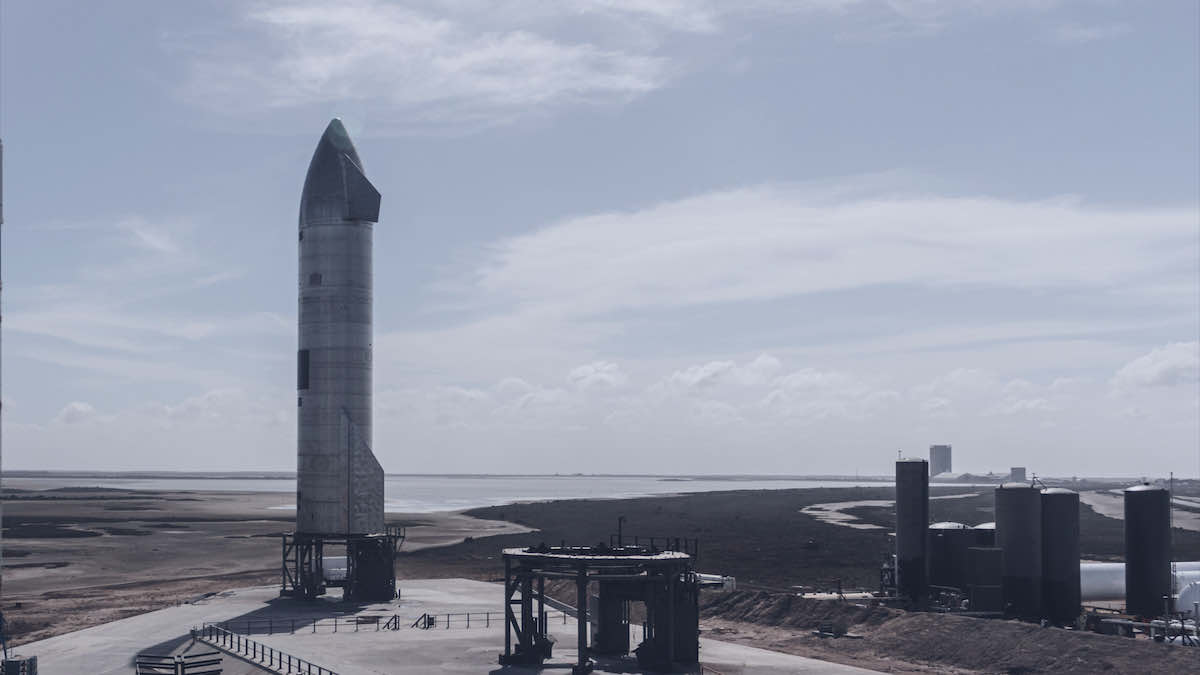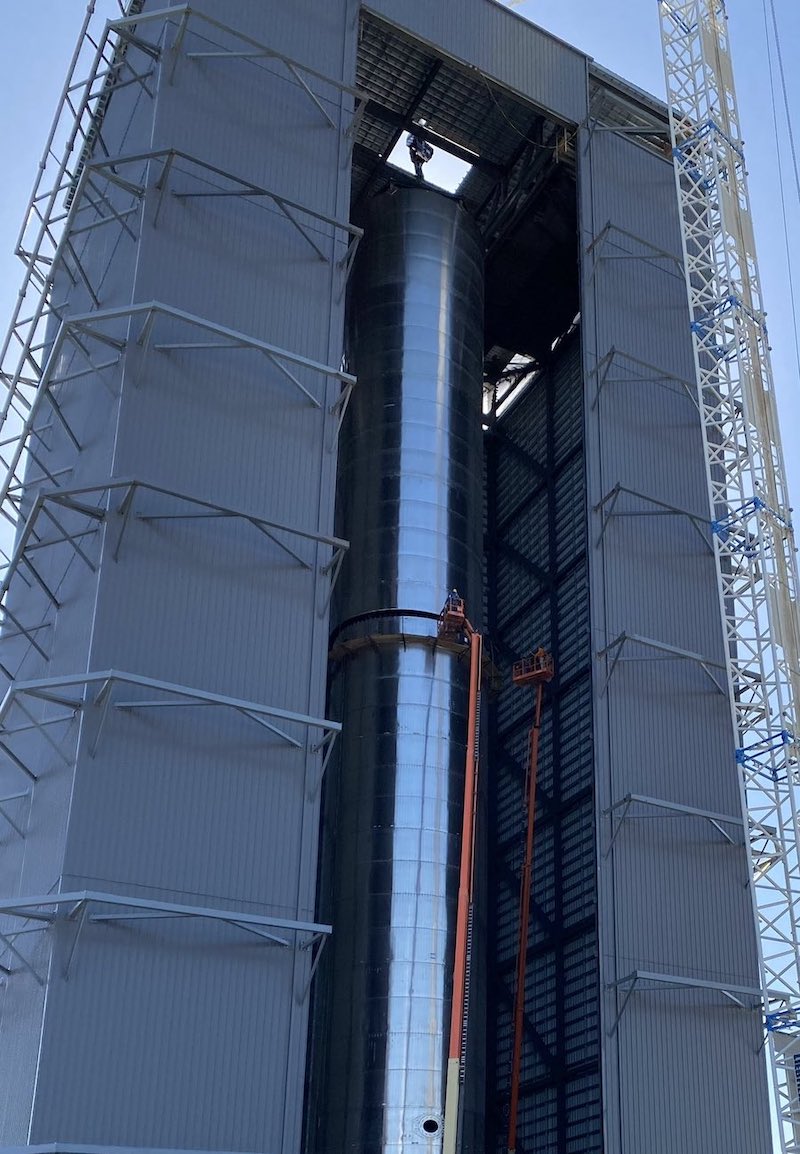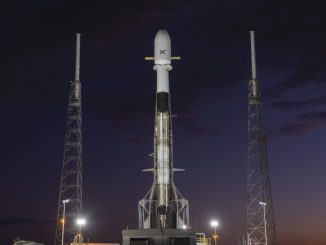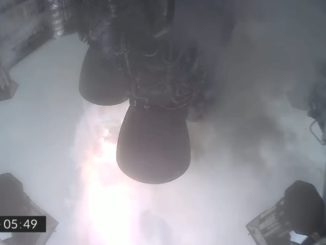EDITOR’S NOTE: Updated Friday and Monday after delays.

SpaceX scrubbed the launch of its next Starship test rocket Friday afternoon, and the the next opportunity for the atmospheric test flight is now expected Tuesday. SpaceX plans to launch and land the rocket at company’s South Texas development complex after losing three previous prototypes in explosions.
The privately-developed Starship test vehicle — designated SN11 — will be the fourth full-size Starship vehicle to take off from SpaceX’s test site in Cameron County, Texas. Like three previous Starship test flights in December, February, and earlier this month, the prototype will attempt to fly to an altitude of about 33,000 feet, or 10,000 meters, before returning to the ground for rocket-assisted vertical landing.
SN11 is the latest in a series of prototypes for SpaceX’s next-generation launch vehicle that will eventually stand nearly 400 feet, or about 120 meters, tall and carry more 220,000 pounds, or 100 metric tons, of cargo to low Earth orbit. That’s more lift capacity than than any rocket in the world.
With life support systems and in-space refueling, the Starship could carry heavy cargo and people beyond Earth orbit. SpaceX is of of three industrial teams with a NASA contract to design and refine concepts for a human-rated lunar lander for the space agency’s Artemis moon program.
The Starship program is intended to eventually ferry passengers and supplies to deep space destinations to Mars, according to Elon Musk, SpaceX’s founder and CEO.
The Starship vehicle will comprise the upper segment of the huge orbital rocket, which SpaceX also calls the Starship. The first stage booster is named the Super Heavy. Both vehicles are designed to be fully reusable.
SpaceX confirmed plans for the Starship SN11 test flight Friday on its website, but Musk tweeted Friday afternoon that the company was “standing down” from the launch “until probably Monday.”
“Additional checkouts are needed. Doing our best to land & fully recover,” Musk tweeted Friday.
Musk tweeted again Monday that a Federal Aviation Administration inspector, presumably filling a safety and oversight role, was unable to reach the Starship facility in South Texas. He wrote that the test flight was postpone to no earlier than Tuesday.
The company says it plans to provide a live video stream of the Starship launch and landing.
SpaceX test-fired the Starship rocket on its launch mount Friday morning, clearing the way for final launch preparations before managers eventually called off the test flight.
The 164-foot-tall (50-meter) Starship SN11 vehicle will be powered at liftoff by three methane-fueled Raptor engines producing more than a million pounds of thrust at full power.
After climbing away from the launch pad, the Starship will shut down its three Raptor engines in sequence before the rocket reaches the apex of its trajectory.
“SN11 will perform a propellant transition to the internal header tanks, which hold landing propellant, before reorienting itself for reentry and a controlled aerodynamic descent,” SpaceX wrote on its website.
“The Starship prototype will descend under active aerodynamic control, accomplished by independent movement of two forward and two aft flaps on the vehicle,” SpaceX wrote. “All four flaps are actuated by an onboard flight computer to control Starship’s attitude during flight and enable precise landing at the intended location.
“SN11’s Raptor engines will then reignite as the vehicle attempts a landing flip maneuver immediately before touching down on the landing pad adjacent to the launch mount.”
The entire flight is expected to last between six and seven minutes. This time, SpaceX hopes the Starship vehicle survives intact.
A hard landing on an otherwise-successful Dec. 9 Starship test flight was caused by low pressure from header tanks feeding the vehicle’s Raptor engines for the critical burn just before touchdown, and one of the Raptor engines failed to reignite for the landing burn on a test flight Feb. 2.
The SN10 rocket achieved the first soft landing of a full-size Starship vehicle at the end of a March 3 test flight, but the rocket exploded minutes later
Despite the explosion, the Starship SN10 test flight appeared to be a major achievement for SpaceX’s Starship test flight program. SpaceX aims to build on that experience with the SN11 flight.

The early focus of SpaceX’s Starship program has been on building infrastructure at the Boca Chica test site, located on the Texas Gulf Coast near the U.S.-Mexico border. Earlier this month, SpaceX completed stacking of the first Super Heavy booster, which Musk said is a “production pathfinder.”
SpaceX assembled the first Super Heavy test article, named BN1, to help learn how to build and transport the 229-foot-tall (70-meter) first stage, which itself is as tall as a Falcon 9 rocket used by SpaceX for operational satellite launches.
The second Super Heavy booster, which is being fabricated but is not yet assembled, is designed to fly, presumably on a suborbital test launch, according to Musk.
SpaceX aims to launch the first fully-stacked Super Heavy and Starship in on an orbital launch attempt from South Texas in July. “That’s our goal,” Musk tweeted.
An orbital launch attempt by July is an aggressive goal, like many schedules outlined by SpaceX’s hard-charging founder and chief executive.
The orbital version of the Starship vehicle will have six Raptor engines, including three engines with enlarged bell-shaped nozzles optimized for higher efficiency in the vacuum of space. The orbital-class Starship will also have a heat shield to survive re-entry back into the atmosphere.
During an orbital launch attempt, the reusable Super Heavy will detach from the Starship — which acts as both an upper stage and in-space transporter — and come back to Earth for a vertical landing. The Starship will continue into orbit and deploy its payloads or travel to its deep space destination, and finally return to Earth to be flown again.
SpaceX’s long-term plans for Starship operations involve the use of a floating launch pad parked in the ocean. SpaceX is converting a decommissioned offshore drilling platform for its future Super Heavy and Starship launch facility.
The Super Heavy booster will be powered by 28 Raptor engines, producing some 16 million pounds of thrust, more than twice the power output of five booster engines on NASA’s Apollo-era Saturn 5 moon rocket.
The entire Super Heavy and Starship stack will measure around 30 feet (9 meters) wide, about one-and-a-half times the diameter of a Boeing 747 jumbo jet.
Email the author.
Follow Stephen Clark on Twitter: @StephenClark1.



